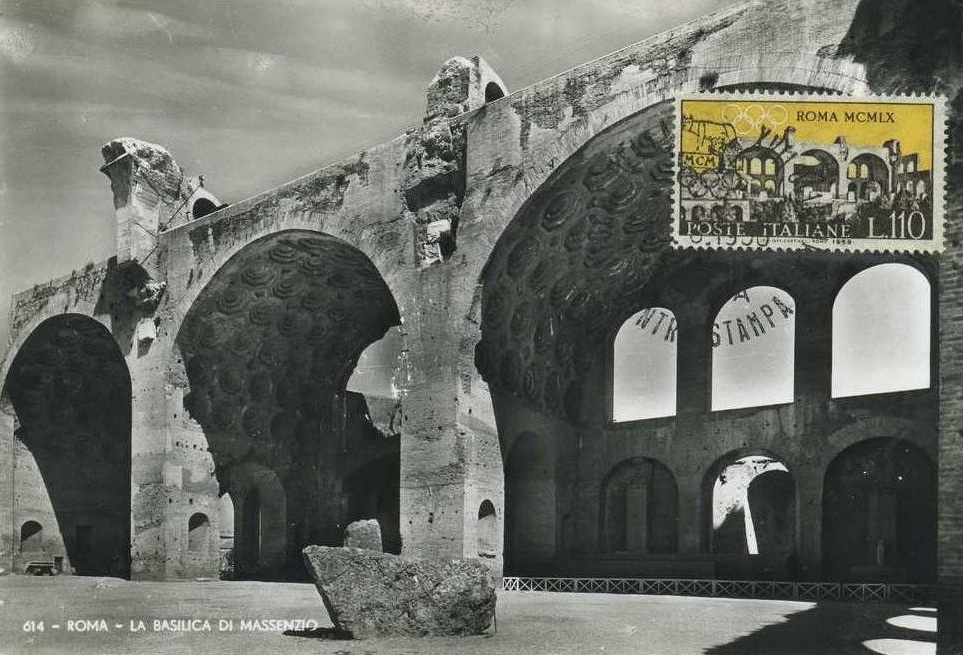Rebranding Rome: Archaeology and the 1960 Summer Olympics

The Archaeological Institute of America (AIA) is one of the oldest and largest organizations devoted to the world of archaeology. It was founded in 1879 and chartered by the United States Congress in 1906. Today it has more than 200,000 members worldwide, belonging to 107 local societies.
Of those local chapters, until recently just two have been located outside North America. There is the Athens-Greece Society, chartered in 1997; and the Iberian Peninsula Society, chartered in 2007. But now a third is in formation, here in the Eternal City. On the evening of Tuesday, 15 May 2012 (starting at 6 PM) the new Rome Society of the AIA will hold its inaugural event—a lecture at the American Academy. Speaking will be current Andrew W. Mellon Professor T. Corey Brennan, FAAR’88, on the topic of “Rebranding Rome: Archaeology and the 1960 Summer Olympics”.
The AIA organization is unique because it counts among its members professional archaeologists and students, but also many others from all walks of life. All the members are united by a shared passion for archaeology, its role in furthering human knowledge, and for preserving the world's archaeological resources and cultural heritage.
For the Rome Society, organizers Crispin Corrado, Eric De Sena and Linda Nolan (John Cabot University) hope that it will serve a vital role among the many academic and cultural institutions in the city. “Our aim is to create a vibrant Society”, they write, “with a bimonthly lecture series and other special events, which will take advantage of the incredible wealth of scholars and material culture that this city and country have to offer.”
There is an email address for inquiries (romeaiasociety [at] gmail.com (romeaiasociety[at]gmail[dot]com)) and a Facebook group. The administrative seat of the AIA Society Rome is the University of California, Rome Study Center (Piazza dell' Orologio, 7).
Current AIA members interested in joining the organization’s newest chapter should contact Membership [at] aia.bu.edu (Membership[at]aia[dot]bu[dot]edu) (i.e., the AIA’s home office in Boston) and ask that one’s membership reflect an affiliation to the Rome Society. (The code for the Rome society is 570.) New members may complete their membership applications online, specifying membership to the Rome Society (again, code 570) at www.archaeological.org/membership. New members receive a discount if they enter “society” in the promo code.
A word about Corey Brennan’s Tuesday, 15 May lecture for the AIA Rome Society, “Rebranding Rome: Archaeology and the 1960 Summer Olympics”. In staging the 1960 Summer Olympic Games, Brennan will argue in his lavishly illustrated lecture, the Rome organizers quite deliberately marshaled 2713 years of the city’s history against the 23 all-too-recent years of Mussolini’s dictatorship (1922-1945), all to emphasize contemporary Rome’s continuity with its antique past. In preparation for the Games, Rome significantly upgraded its archaeological zones. The Greek, Roman and even Etruscan past all found a prominent place in the official Olympic exhibition “Sport in History and Art” at the Palazzo delle Scienze in EUR. And over the course of five nights preceding the Games’ opening, the folkloric aspects of Medieval and Renaissance Italy were on display in the Circus Maximus.
But most striking and evocative was the notion to use Rome’s archaeological and historical monuments as the setting for some of the most important athletic events. The idea seems to have emerged—apparently of necessity—in the winter of 1955/1956 when the organizing committee made its evaluation of facilities needed for the Games. Wrestlers would compete in the Basilica of Maxentius, by far the largest standing structure in the old Roman Forum. Gymnasts were assigned to the similarly imposing Baths of Caracalla. And for the first time in Olympic history, the marathon would neither start nor finish in the main stadium. Rather, the race would start at the foot of Michelangelo’s Campidoglio staircase, with a finish (at night!) hard by the Colosseum at the fourth century AD Arch of Constantine.
Rome’s broad-gauged historical and cultural approach to its Games, coupled with its effective use of Italy’s most brilliant and accomplished architects, effectively eclipsed the basic facts that it was the first ex-Axis power hosting an Olympics since the Allied victory in World War II, and that it was Mussolini’s regime which had created the two main centers for the competitions (Foro Italico and EUR). On the other hand, Brennan argues that it was precisely the Fascist penchant for exploiting Rome’s ancient monuments for political rallies and propagandistic displays that likely suggested to the Rome Olympic organizers the use of the Basilica of Maxentius and Baths of Caracalla as sports venues for 1960. That experience under Mussolini also will have offered the means of addressing the immensely difficult technical problems associated with these sites, which the organizers needed to solve in close cooperation with the Archaeological Superintendency for Rome.